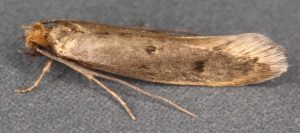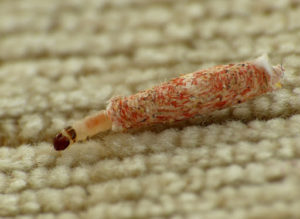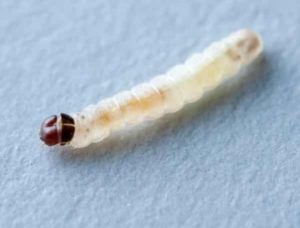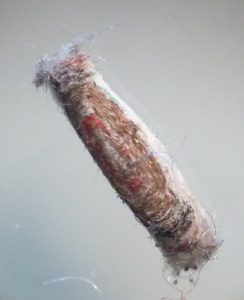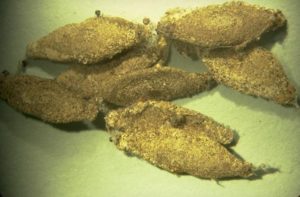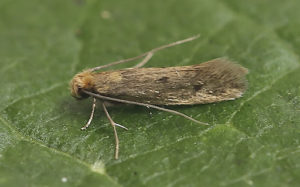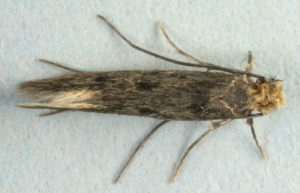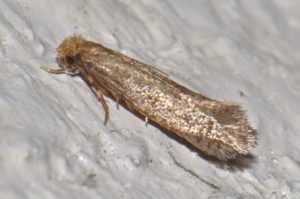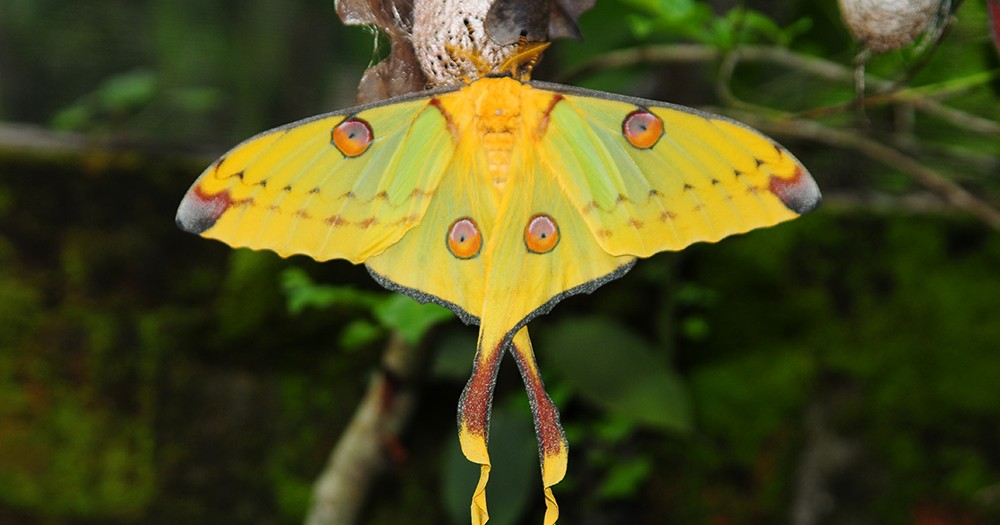Casemaking Clothes Moth (Tinea pellionella)
The casemaking or case-bearing clothes moth is a member of the fungus moth family. It has a cosmopolitan distribution and is often referred to as a bagworm because of the bags that the larva carry themselves around in. It is a common pest to upholstery, woolen fabric, fur, and carpet, as evident from its name.
en.wikipedia.org
Scientific Classification
- Family: Tineidae
- Genus: Tinea
- Scientific Name: Tinea pellionella
Caterpillar
The larvae are creamy-white, 0.5 inches (1.27 cm) long. They enclose themselves in an open-ended silk case to move about. Their food sources consist of animal-derived clothing materials like wool, leather, silk, fur, and feathers.
Adult Moth
exual Dimorphism: Present but not prominent
Color and Appearance
The color ranges from silvery gray to a shiny light brown. There are dark grayish hairs on its head. Forewing: They are grizzled brown with a single large spot and fewer black spots, smaller in size, and paler in color.
Hindwing: The wings are plain and pale brown-gray, surrounded by hairy fringes.
Average wingspan: 9-16 mm
Season: June- October
Egg
Females lay the eggs in small clusters, which hatch in 4-10 days. The number depends on how high the temperature is.
Quick Facts
| Other Names | Case-bearing clothes moth |
| Distribution | Worldwide |
| Habitat | Dark, moist areas in households |
| Predators | Not recorded |
| Lifespan of Adults | 2 months |
| Host Plants | The larvae do not feed on plants |
| Adult Diet | Do not feed |
Did You Know
- As they prefer higher temperatures, well-heated buildings are more likely to get infested by them.
- Though similar in size and appearance, mainly infesting fabrics, the casemaking and webbing clothes moth vary in color. The former has a brownish appearance with dark wings, while the latter has a golden-tan body and wings.
Scientific Classification
- Family: Tineidae
- Genus: Tinea
- Scientific Name: Tinea pellionella

